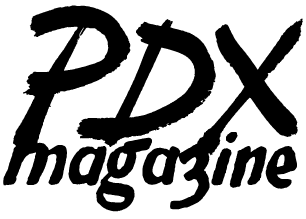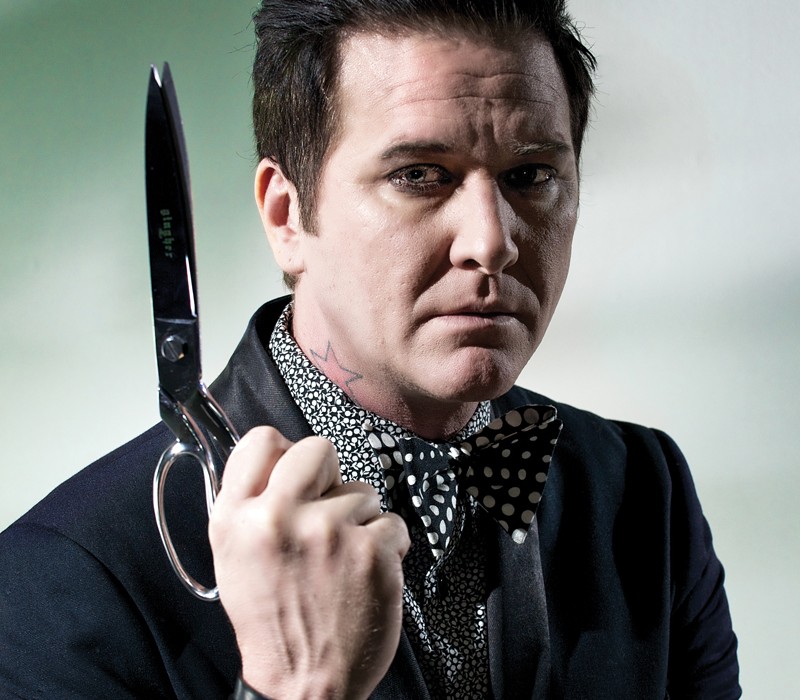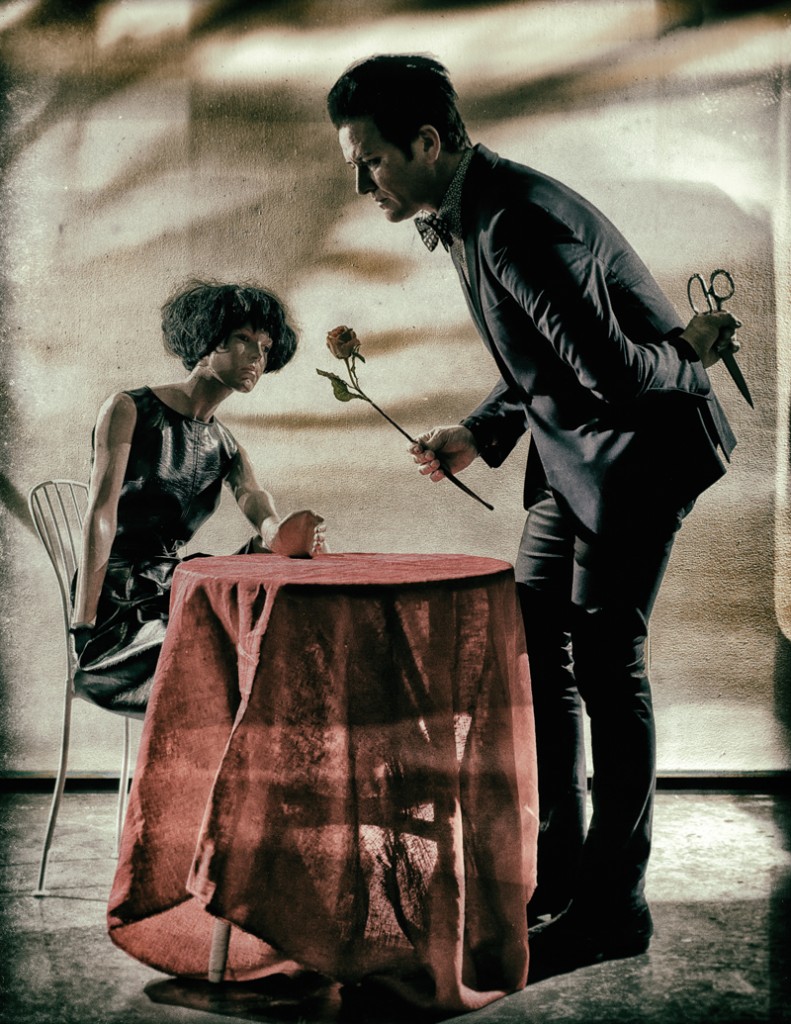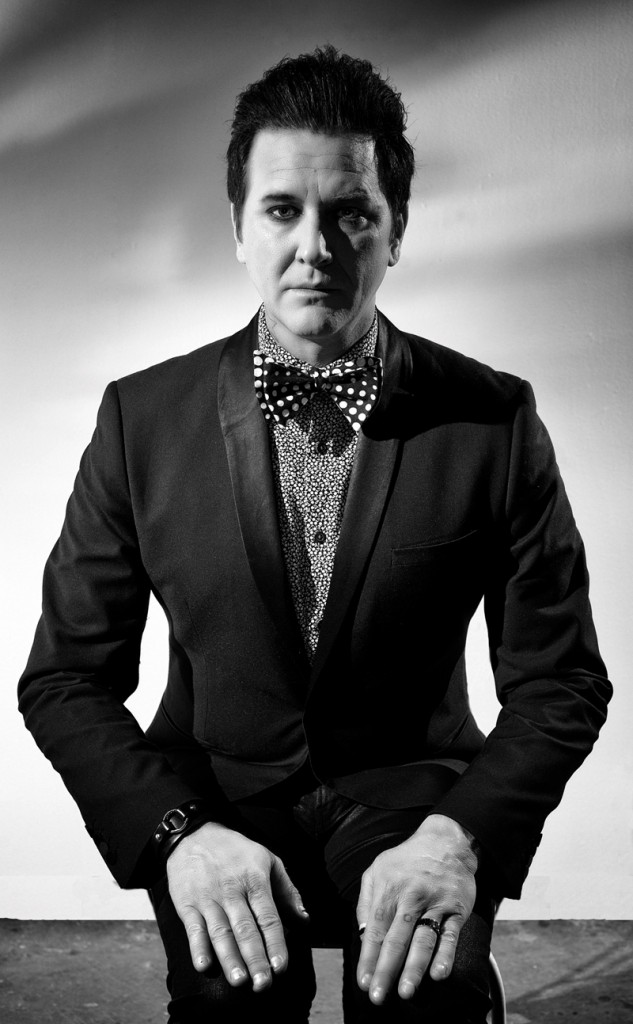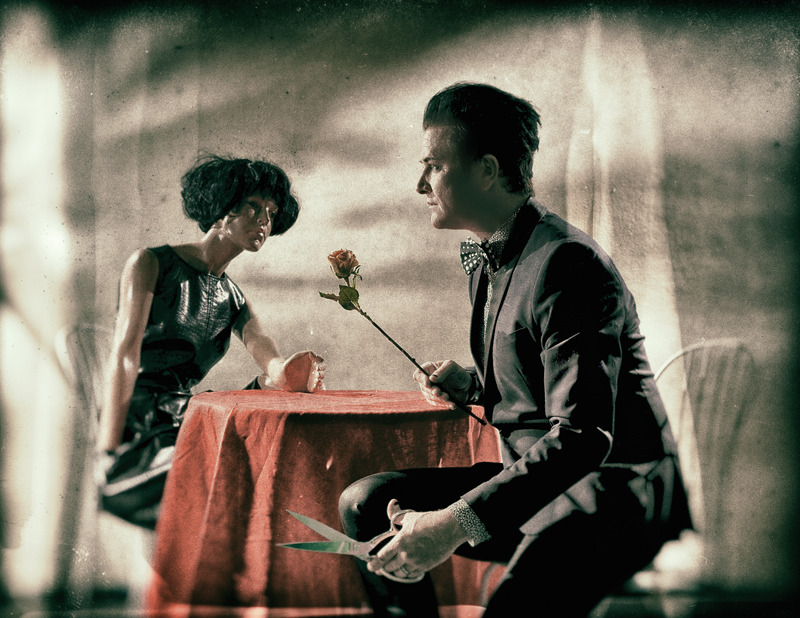By Darka Dusty
Photos by Miri Stebivka
I’m not going to lie. I watch some reality television.
This admission would hardly impress most of my friends here in Portland, where it’s way cooler not to own a television than to own one. I even have friends who hide their tellies in their closets, or under batik sarongs when company arrives. But I must admit: I’m a sucker for certain reality shows. Yes, I know. It makes absolutely no sense to watch Top Chef since I’ll never taste the food. It makes no sense to continue to annoy myself by suffering through those copy-cat Adeles, with that now-generic singing style sweeping today’s young contestants of American Idol. It’s ridiculous that I used to watch Bear Grylls eat live, squirmy jungle creatures in Man vs. Wild.
But there is one show I’d like to come out of the closet about. It’s the one reality show that has some real authenticity (I know, oxymoron). The emotions are real. The show is not scripted. There are really difficult creative challenges and there is superior talent—that show is Project Runway. The show centers around the world of fashion, which is foreign to me. I can barely sew a button on a shirt, which is why I watch with glee when the contestant designers are given crazy-impossible challenges and infinitesimal amounts of time in which to do them. Therefore, when I had the opportunity to interview Vancouver’s own Seth Aaron Henderson—the winner of Project Runway, Season 7 (2010), who also just won Project Runway: All Stars in January—and assist in the photo shoot for this article, I was suddenly starring in my own surreality show. Worlds collided and I found myself face-to-face with one hell of a compelling human being.
Seth Aaron Henderson (whose design label is simply “Seth Aaron”) is a bold and impressive presence. Since winning Project Runway: All Stars in January, he has experienced a whirlwind of media attention. He has a creative fire burning inside of him of which most of us would be terrified. He possesses the kind of energy that we “normal people” achieve after a minimum of three Red Bulls. He’s motivated to the core, and yet he’s approachable and real. People who work with him describe Seth Aaron as “brilliant and spastic,” “dynamic and inappropriate, in equal measures,” “intense, spontaneous, complex,” and even as “a diva, but in the best possible way.” The man knows where he’s going and how to get there. He knows what he wants and seems to possess an enviable knack for making Swiss-precision-timed career moves.
While his reality show assent has been covered in dozens of publications already, I was more interested in peeking inside his psyche to find out what makes this man tick. When I asked what led him to his two Project Runway victories, I found Seth Aaron willing to share, not only the story of his double reality show odyssey, but parts of himself that others might more carefully guard. He is grateful and unpretentious, even despite the enviable, extraordinary turn his life has taken. I sat down with him just a few short weeks after his Project Runway: All Stars win to learn more about his reality.
Darka Dusty: When did you realize you had a passion for fashion?
Seth Aaron: Probably ten days after my conception (laughs). This is the way I was born. As a toddler, I would go to department stores with my mother and grandmother. I loved going shopping with them. Most other kids would scream and holler. Not me. My grandmother would shop and I was just in heaven. Then I’d go home and play with my GI Joe and pretend to shoot things.
DD: Did you stand outside their dressing rooms saying “that works” or “that doesn’t work”?
SA: I don’t know about that, but it’s always resonated with me. I made a decision to start designing in 2006, but I’ve been in the fashion industry since 1998. So, it took several years prior to picking up a sewing machine and saying “I’m going to make my own stuff.”
DD: That’s quite a short time between when you started making your own clothes to when you won Project Runway, Season 7.
SA: Oh yeah, it was only four or five years. I had never sewn in my life. It was Dec. 26, 2005 when I plugged in my machine and first started sewing, and I haven’t stopped since. Learning how to sew is one thing. Anyone can learn how to sew. It just takes practice. But understanding volume and shapes and being able to visualize how to put something together before it exists—that’s what I was born with. I can look at a blanket and I can visualize a dress made out of that blanket. I can see what it will look like in the end, before it’s ever cut. That’s just something I’ve always done. I daydreamed a lot when I was a kid. I’ve always had these scenarios playing out in my head like short films—it’s strange.
DD: Did you have good support for your creative endeavors growing up?
SA: Creatively, I had great support. My parents were in the arts. That being said, I didn’t have much structure. Out of high school I got a scholarship to go to any art school in the world. But I didn’t have any parental guidance, so I didn’t go. I went to work instead, and eventually I went to work in the industry. But I encourage kids to go, just because, you know, I’m a lucky success story. But what if it didn’t work out? I’d be saying “Do you want fries with that?”
DD: But you would arrange the fries really nicely.
SA: Exactly. “These fries are beautiful.” But I always encourage kids to go to school. It can’t hurt. Even if it’s just for a year. At least within that year you’ll know whether you really want to do it, or maybe you’ll change direction and do something else.
DD: Tell me about that first thing you designed in December 2005?
SA: I did probably like three (designs) in three days. I couldn’t stop. I stayed in there for about 18 hours the first time. I ended up with the classic student dress made out of ties, with a cotton blazer, which I now look back on and it’s like “Holy crap, it looks like a four-year-old put this together.” But there was immediate structure. It was never like a tent. Even that first item was fitted, it was immaculate. This is what I like. Maybe the lack of structure in my household relates to my structure in my clothing. I don’t design off of objects. I design off of emotion and memories.
DD: Memories. That’s interesting. Can you give me an example of something that you may have designed with a specific memory in mind?
SA: Well, it can be as simple as a sunny day in San Diego. Or, the emotions I had when I was 13. Or, I listen to music. Music is my number one inspiration. People ask me how I use music as an inspiration for clothing. It’s down to the stories inspired inside my head. When I listen to a song, I listen to the lyrics, I listen to the beat. But the lyrics are key because I’m thinking about who they are singing about. What do they look like? Where are they going? Where do they live, what do they like to drink? It’s my fantasy world in my head.
DD: This is interesting, because to prepare for this interview, I actually looked up “rock star interview questions.” I just had this feeling that music was somehow involved in what you do.
SA: It is. I can’t play a damned thing, I cannot play an instrument, I can’t sing, I can’t dance, but I can listen to music and make clothes.
To look at Seth Aaron, though, you can easily imagine him jumping onto a stage, strapping on a guitar, thrashing out some distorted power chords and screaming into the mic. His punk energy hits you instantly. Maybe it’s the black nail polish and the radical hair, or his painted-on pants. But it’s not just an outward image or affectation. This is a part of who he is. When it’s time to dress up, he adores it and respects formality, just as he did when he was a kid. He’d be playing outside in the mud and when it was time to go to his grandmother’s house, he’d happily clean up and put on nice pants and a dress shirt. We’re all a bit too casual here in the Pacific Northwest, Seth Aaron says, ruffling his own feathers recounting how he witnessed “some dude in cut-offs and a Budweiser t-shirt at the ballet.” He fancies himself as someone who could have come from the 1940s or 1950s—a time when traveling on an airplane was a special occasion, when everyone dressed up just to leave the house. His design aesthetic is geared toward women who are classy, not trashy. As in, showing more skin isn’t sexy but a well-tailored, classic Chanel suit is. He wants to instill confidence in women today through his designs, and judging by the incredible response to his creations, he’s succeeding.
His approach to his design work is spontaneous, manic, and creatively edgy, much like his persona. As a self-taught designer, Seth Aaron thinks that while going to art school can help someone learn useful skills, breaking rules may be more creatively important than following them. He trusts in creative experimentation. He taught himself to sew by following vintage patterns from the 1940s, 1950s, and 1960s. He quickly realized patterns can often be wrong, and the subsequent process of putting the puzzle pieces together was very useful in his growth as a designer. He used patterns as general guides with a lot of trial and error. He would replace the pattern’s suggested fabrics with modern-day textiles that have a lot more give, producing very tailored, tight-fitting but comfortable pieces that would eventually become his trademark. He believes that by breaking rules, you can test, push, and elevate your creativity. It’s a balance between having enough of a skill set that you can actually execute what you see in your head, but having enough sense to know when to bust out from the confines of theory and discipline, and put a twist on it to make it truly original. He has learned how to push the creative envelope but knows how to edit himself. Seth Aaron takes pride in the fact that his designs have a way of etching themselves into your mind. Our conversation about standing out and being creatively memorable was illuminating:
DD: Do you feel that you’ve mastered your craft at this point in your life?
SA: No. You can never know it all. I think it was Oscar de la Renta who said you can learn something every day and you learn from the silliest places. You can learn from a student, or you can learn from a child. You learn from nature. You can never know it all. I follow that philosophy. Every time I finish a piece of clothing, I love it, but want next time to be even better. There is always something that can be improved, no matter how perfect it seems.
DD: How do you know when to stop designing?
SA: After a bottle of wine (laughs). No, because it would start to get a little messy then. I don’t know. Should you ever stop? It comes with experience. You learn to edit yourself. I push it right to the edge, but I don’t go too far. There’s that line. There’s high fashion and then there’s costume. I always push it. That’s what I like to do. A runway show should be a show. It shouldn’t be a bunch of ready-to-wear from Nordstrom going down the runway. A runway show should be exciting, exhilarating—it should make people think. No matter if you love it or hate it, six months later you’ll still remember my show. You’ll still remember certain pieces in that show. Whereas with some other designers, ten minutes later you won’t remember what you saw. It’s beautiful when it’s in front of you but you’ll have no memory of it. I still get emails from people saying they saw one of my shows a while back, and they’ll call out a certain piece they saw and they’ll even call out the fabric. They tell me they never forgot it. I want to burn something in your mind so that you’ll never forget it.
DD: Every creative person, every artist, every designer, every musician has the “how” and the “what” of their craft, and there’s also the question of “why.” Why do you design? Why do you do it?
SA: Because if I didn’t I’d be dead. I don’t want to sit in a cubicle. I don’t want to file a report. I would shoot myself. I design because it’s how I breathe and live. I have to.
DD: What did you do before you started designing clothes in 2006?
SA: I was frustrated. Mentally, it was like, “What am I doing?” I was lost. I worked a lot of jobs, but all of them had some sort of design in it—even when I managed a coffee house, I always made people’s big latte bowls with a beautiful picture out of foam. It had to have design in there somewhere. I’m a perfectionist I guess. But I wasn’t satisfied where I was. I always wanted more. Even today, with everything I’ve accomplished, I want more. I’m not ever satisfied.
DD: What do you want now?
SA: Everything. I’m moving on. My label now has gone to this level, and I’m moving on to men’s fashion. And accessories. And bags and shoes and sunglasses. It’s not a matter of money or greed. That’s not what I mean by more. It’s that I want more creatively. I want more challenges. It’s about pushing myself. If I let myself be satisfied with where I am right now, that’s the only place I’m ever going to be; whereas if I push myself, I will grow. I take criticism well. I listen. That’s the great thing about Project Runway and being given the chance to work with mentors, other designers, and judges. Michael Kors (famous fashion designer and Project Runway judge) once told me, “Only about 20 percent of someone’s opinion is worth keeping.” But if you can find one positive thing from someone’s criticism, you can turn it around and use it to help you grow. That’s the way I approach it. So when someone tears it apart, I try to find that one thing that’s going to benefit my growth, and my design. A challenge is an opportunity. One hundred people may love it, one hundred people may hate it. But what did they hate about it? And how can I turn that into a positive?
DD: Can you describe your creative process? Does something speak to you? Or do set out to design something specific? Or do you wait for inspiration to come? Do you draw or use a computer? What’s your method?
SA: I sketch. My father was a cartoonist. And it shows a lot in my clothes. My designs can be very cartoon-y, it’s the way I like it. It’s pop art. I love Andy Warhol. I love that kind of art—very graphic. But I didn’t sketch on Project Runway, Season 7. I did three sketches the entire season. When I go into a fabric store, the fabrics speak to me. I get to the room and then I make it. Even if I started with a sketch, I eventually just chuck it and work out of my head. That’s kind of my process. I know what fabric is supposed to do, and what it shouldn’t do. Sometimes I defy it and try to make it do what it’s not supposed to do, and a lot of times it works. Being experienced with textiles and techniques makes a huge difference.
DD: So, it doesn’t sound like you second-guessed yourself a lot during the making of the show. That must be a very good trait to have in those circumstances.
SA: I did in All Stars. Midway through the show it was burnout time. You just start crashing mid-season. And then you have to pick yourself back up. You start mentally and physically crashing. Your mind just starts to be exhausted. But it was during—of all things—the Marge Simpson challenge. A cartoon! I thought this would be perfect for me. The challenge was to design a 25th-anniversary look for Marge Simpson. I thought that meant the 25th anniversary of the show, and it was supposed to be a red carpet, Hollywood look. I misunderstood the challenge. It was supposed to be a 25th wedding anniversary dress for Marge, a wife from the Midwest. I found out late in the game that that was not the challenge. And that’s when I went, “Oh.” I ended up changing it a bunch of times. I made a dress in the end that got me through to the next round, it wasn’t the worst, but they called it lazy and disappointing. But I was just exhausted. My friend Anthony Ryan (a co-contestant) texted me later and said, “Rest your head, regroup and come back and kick everybody’s ass.” I called my daughter, I told her how I was feeling and she said, “Snap out of it!” She had a lot of good words for me. So, I rested, regrouped and I ended up winning the whole thing. When I came into it, Tim Gunn told me “Slow and steady wins the race.” I started strong, showed my point of view, and then backed off. I knew what I was doing. I was reserving myself and then at the end I would nail it. That was part of the plan. Before I left for New York I said, “When I get to the final, this is what I’m going to show them” and that’s exactly what I did. It worked. It was what I wanted to do. I was fortunate that it worked out.
Seth Aaron is a family man. He dedicates himself to his wife and kids. Perhaps this is a conventional notion for a hot fashion designer who’s jumping from Project Runway, to record-breaking spots on QVC, to making clothes for Hollywood stars. But he’s all about balancing his family life with his professional life. He’s getting ready to uproot the family and move from Vancouver, Washington to Los Angeles, not only to further his career but also to be supportive of his son, who’s about to start film school. He wants to be around to support his kids if they need him, and provide some structure for them—the structure that he didn’t have when he was their age. The best advice Seth Aaron ever received was from his grandfather who told him that he would be great at something, but it was up to him to discover what that thing was. Years went by, but one day he found it. Yes, it happened at a later stage in life; but perhaps this fact fed into his voracious appetite to make it, to hit it big—and to win.
Today, his fashion career is focused on business. Seth Aaron witnessed some Project Runway winners become enamored with the post-show media Hollywood blitz only to become dazzled and ultimately distracted by it. But he also noticed how other winners, like the young Christian Siriano, who won season four of Project Runway then went straight back to work, and took his business seriously. Seth Aaron says that Siriano is incredibly successful now because he knew where to place his focus. Seth Aaron is using this example, using his own reality show wins wisely to further his business and launch new design lines. He refuses to rest on his laurels. From the moment Seth Aaron won Project Runway: All Stars, he was off and running–with scissors. He went back to work. He had the opportunity to appear on QVC where his designs were a success, selling out in record time.
He continues to count on the mentorship of Tim Gunn, an on- and off-air mentor on Project Runway for years. When faced with a creative quandary, Seth Aaron says he still asks himself, “What would Tim do?” His creative decisions have to feel right, and they have to be visceral. They have to hit him on a gut level. It’s obvious Seth Aaron’s instincts are right on the money. It’s a combination of his savvy, his commitment to personal integrity, and his innate skill that has formed the perfect storm to bring him to this auspicious point in his life and fashion career. You’d think the guy would be cockier than he is. He has every right to be.
